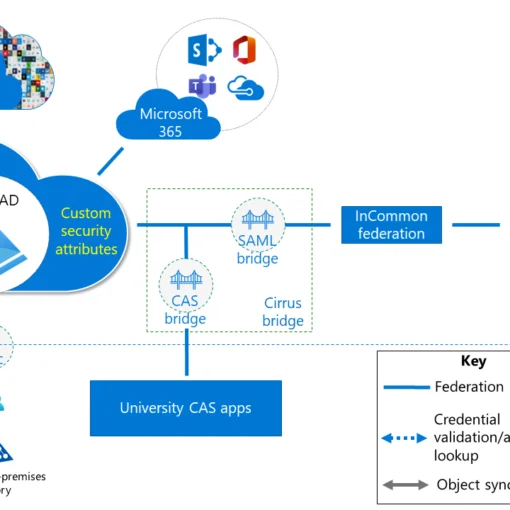Updated – June 2024

As enterprises increasingly adopt cloud computing, managing and securing network connectivity becomes crucial. Microsoft Azure offers powerful tools to simplify and streamline this process: Azure Virtual WAN and Azure Virtual Network Manager. While both tools provide robust networking solutions, they serve different purposes and scenarios. This comprehensive guide will explore their features, benefits, and ideal use cases.
Why Advanced Network Management Matters
- Centralized Management: Simplifies administration and policy enforcement.
- Enhanced Security: Provides tools for secure and compliant network configurations.
- Optimized Connectivity: Ensures high performance and reliable connections across regions.
- Scalability: Supports growing and evolving network requirements.
Azure Virtual WAN
Azure Virtual WAN is a networking service designed to provide a unified and global transit network for connecting and managing branch offices, datacentres, and Azure virtual networks. It simplifies large-scale network deployments and ensures high availability and performance. Key Features:
- Global Transit Network:
- Provides a central hub-and-spoke architecture, connecting various on-premises sites and Azure VNets.
- Ensures optimal routing and traffic flow across regions.
- Automated Branch Connectivity:
- Simplifies the setup of site-to-site VPNs and ExpressRoute circuits.
- Supports SD-WAN integration for seamless branch connectivity.
- High Availability and Resilience:
- Built-in redundancy and failover capabilities.
- Ensures continuous availability of network services.
- Centralized Security and Policy Management:
- Enforces security policies across the network.
- Integrates with Azure Firewall Manager for comprehensive security.
For instance, a multinational corporation with numerous branch offices can leverage Azure Virtual WAN to streamline their global network connectivity. By using a hub-and-spoke model, the corporation can ensure optimal routing, reduce latency, and simplify the management of site-to-site connections. This setup enhances operational efficiency and provides a scalable solution for future expansion.
Azure Virtual Network Manager
Azure Virtual Network Manager (VNet Manager) is a centralized management solution for Azure Virtual Networks. It allows you to create, manage, and secure your VNets with ease, providing granular control over network configurations and policies. Key Features:
- Centralized Network Management:
- Simplifies the management of multiple VNets across different subscriptions and regions.
- Provides a unified interface for configuring and monitoring network settings.
- Network Configuration and Automation:
- Automates the deployment and configuration of VNets.
- Uses network configuration templates to ensure consistency across environments.
- Security and Policy Enforcement:
- Enforces network security policies, such as NSG rules and private endpoints.
- Integrates with Azure Security Center for continuous security monitoring.
- Visibility and Monitoring:
- Provides detailed insights into network traffic and performance.
- Integrates with Azure Monitor for advanced logging and diagnostics.
For example, a large enterprise with multiple development teams working on different projects can use Azure Virtual Network Manager to maintain consistency in network configurations. By defining network configuration templates and security policies, the enterprise ensures that all VNets adhere to corporate standards, reducing the risk of misconfigurations and enhancing overall security.
Comparing Azure Virtual WAN and Azure Virtual Network Manager
| Feature | Azure Virtual WAN | Azure Virtual Network Manager |
|---|---|---|
| Primary Focus | Global network connectivity | Centralized management of VNets |
| Architecture | Hub-and-spoke global transit network | Centralized management interface for VNets |
| Connectivity | Site-to-site VPN, ExpressRoute, SD-WAN integration | Automated VNet configuration and deployment |
| Security Management | Centralized security with Azure Firewall Manager | Policy enforcement with NSGs and private endpoints |
| Use Case | Large-scale, global network deployments | Granular VNet management across subscriptions |
| Scalability | High scalability for global networks | Simplified management for multiple VNets |
| Performance Optimization | Optimized routing and traffic flow | Detailed monitoring and insights |
Choosing the Right Solution
When deciding between Azure Virtual WAN and Azure Virtual Network Manager, consider the following factors:
- Scale of Deployment: For large-scale, global network deployments with numerous branches, Azure Virtual WAN is ideal. For managing multiple VNets within Azure, Azure Virtual Network Manager is more suited.
- Connectivity Requirements: If your primary need is to connect multiple on-premises sites and ensure high performance across regions, Azure Virtual WAN is the better choice.
- Management Complexity: If you need a centralized platform to manage VNets, enforce policies, and ensure consistency, Azure Virtual Network Manager provides the necessary tools.
- Security Needs: Both solutions offer robust security features, but Azure Virtual WAN integrates more seamlessly with global security policies and Azure Firewall Manager.
Azure Virtual WAN and Azure Virtual Network Manager are powerful tools that cater to different networking needs. By understanding their features and use cases, you can choose the solution that best fits your organisational requirements. Both tools enhance network security, simplify management, and ensure high performance, making them essential for modern cloud networking.
Sources:
- Microsoft Azure Documentation: Azure Virtual WAN
- Microsoft Azure Documentation: Azure Virtual Network Manager
- Azure Networking: Best Practices for Network Security




